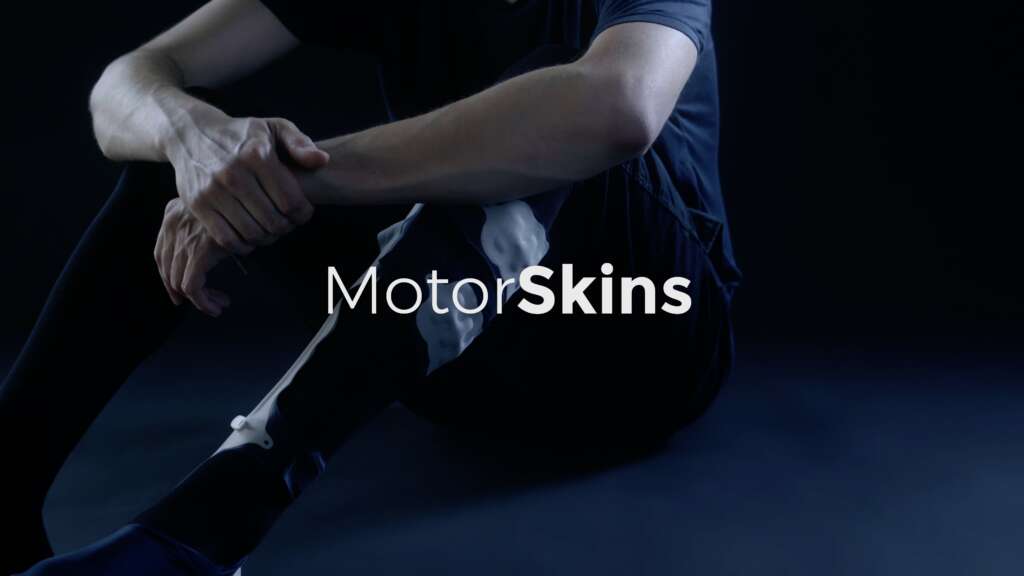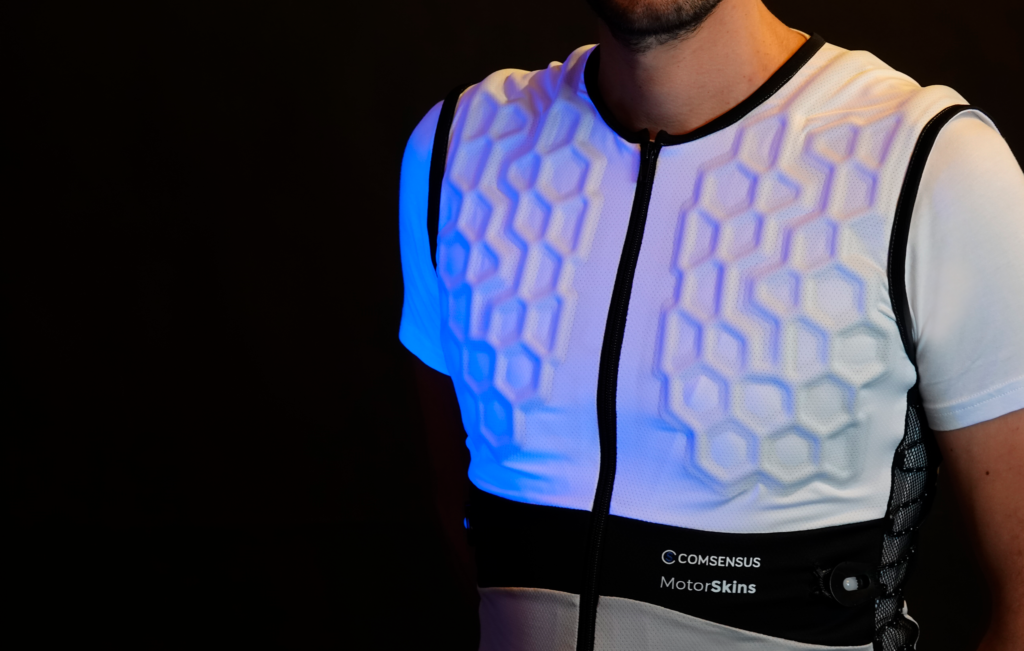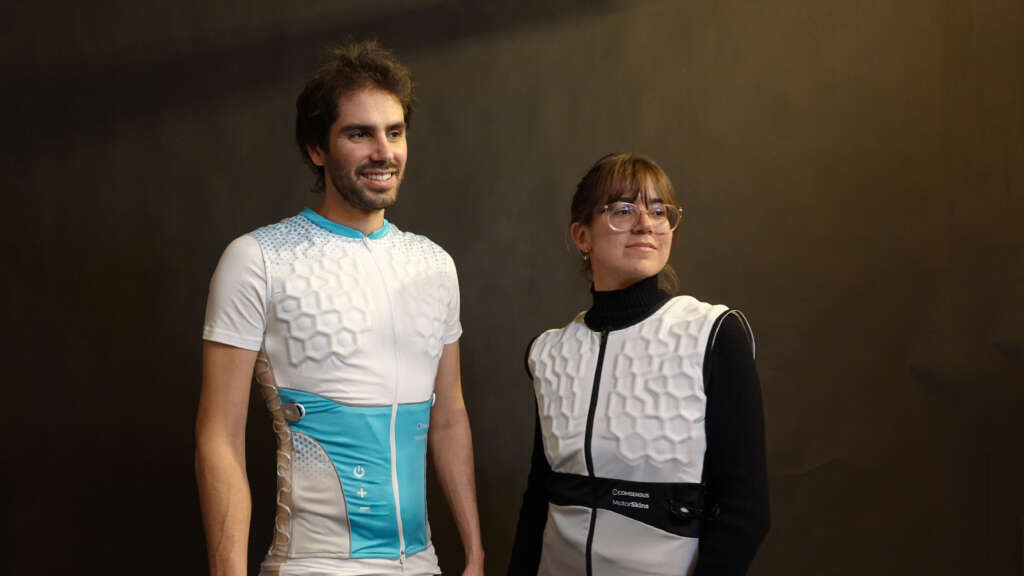In a world where technology, sustainability, and design intersect, MotorSkins is at the forefront of innovation. The Berlin-based startup is making waves in the automotive industry by developing fabric-based soft robotics and morphing textiles that take inspiration from biological systems. Founded by an interdisciplinary team with expertise in design, biophysics, physical chemistry, and business, MotorSkins is pushing boundaries with a vision that integrates simplicity, efficiency, and eco-consciousness. Recently, Facundo Gutierrez, a representative of MotorSkins, sat down to discuss the company’s groundbreaking collaboration with Lotus on the futuristic Theory 1 concept car.
1. What is MotorSkins, and how did this vision originate?
MotorSkins is based in Berlin, and we’re focused on soft robotics, specifically fluid-based robotic textiles. Our work draws inspiration from biological systems and plant movements to create innovative, more energy- and material-efficient designs. Bio-inspiration—aiming for solutions that are simpler, more elegant, and environmentally friendly—is at the core of our philosophy. Interdisciplinarity is key to this approach. Between the co-founders, we have backgrounds in design, biophysics, physical chemistry, and business, which gives us a broad perspective.

We started by developing soft exoskeletons to assist people with walking. But along the way, we realized that our designs could do more. They could act like muscles, bending actuators, stiffening structures, and even function as valves, sensors, or provide haptic feedback. We quickly saw that MotorSkins could be applied far beyond medical use, extending into sports, personal protective equipment, human-machine interfaces, and automotive interiors. That’s when we transitioned from being a product-specific startup to becoming a platform for technology that spans multiple industries. Partnering with industry leaders like Lotus has allowed us to combine expertise and accelerate innovation.
2. MotorSkins specializes in fabric tech. Could you walk us through how your expertise in this field influenced the interior design of Lotus’ Theory 1?
Our journey in the automotive industry began when we realized that our morphing textiles could function as haptic interfaces, transmitting and receiving information beyond wearables and extending to every surface—turning textiles into universal, haptic HMIs (Human-Machine Interfaces). For the Theory 1 concept, we applied MotorSkins technology to the seats, steering wheel, and door panels, focusing on emerging features and haptic feedback. We’re excited about this because it represents a shift from visual-dominant interfaces to a more immersive experience that engages multiple senses. The seats and steering wheel feature emerging chambers that provide haptic feedback based on the driving experience, such as sensing the terrain, speed, or nearby hazards. Importantly, these features only appear when needed, maintaining a sleek design without unnecessary distractions.

3. Sustainability and innovation are key drivers in the automotive industry. How does MotorSkins balance cutting-edge technology with eco-friendly practices in the development of materials for vehicles like the Theory 1?
Our approach to sustainability is to reduce as much as possible. Our systems use the minimum number of components and materials, which reduces the footprint and facilitates recyclability. Additionally, MotorSkins technology, being primarily composed of textiles and using air as a working mechanism, is significantly lighter than traditional approaches, which positively impacts performance and energy efficiency.
Our collaboration with Lotus was a perfect match. The Theory 1 was built under the “10 challenge,” meaning the entire car has only 10 side “A” materials (the ones users can see and touch), compared to the 100+ typically found in production cars. This enormous challenge reflects the future approach to sustainability.
4. The interior of a car is a tactile and sensory experience. What were the main challenges you faced in designing materials that are both functional and luxurious for Theory 1’s futuristic design?
The main goal for the Theory 1 was to enhance the user’s driving experience. The challenge was to create a car that adapts to the driver, rather than the other way around, while keeping the system simple and efficient. Luxury in the Theory 1 comes from simplicity, performance, and experience. Everything in the car has a purpose and function, so the sense of luxury comes from purity, not ornamentation.

5. MotorSkins operates at the intersection of design, technology, and sustainability. How do you see this synergy shaping the future of automotive interiors?
We believe that integrating tactile feedback can truly enhance the customer experience, complementing screens and other visual elements. There’s a big difference between interacting with a touchscreen and physically pressing a button, feeling its resistance and the force needed to activate it. Given that the skin is the largest organ of the body—covering about 2 m²—it presents a huge opportunity for interaction.
MotorSkins aligns with the broader “shy-tech” trend, but we push it further by offering simplicity and new design possibilities. Our fabric-based robotic textiles provide a familiar and cozy experience for drivers. Looking ahead, we see potential in every textile surface that drivers come into contact with. Beyond haptic feedback and HMIs, we’re also thinking about comfort and storage on demand, pushing the boundaries of shape-morphing materials to create interiors that adapt dynamically to different users, driving styles, and environments.

6. Lotus is known for its performance-driven ethos. How did you ensure that the materials you provided not only enhance the aesthetic but also contribute to the overall performance of the vehicle?
MotorSkins technology boosts performance by offering a unique driving experience. The inflatable chambers in the seats and steering wheel provide real-time, dynamic information to drivers about road conditions, traffic, incoming calls, and more. The on-demand buttons help keep the interior clean and distraction-free when not in use. When needed, the buttons emerge and provide natural, tactile feedback, allowing the driver to interact without taking their eyes off the road.

7. What innovations or technologies are you particularly proud of in the Theory 1 project, and how do you think they will influence the broader landscape of automotive design?
We see the potential for this technology to appear more widely throughout the car’s interior. In the future, it could be used not just for HMI and haptic feedback but also for comfort and storage on demand. We envision actuated robotic textiles enabling entire interiors to morph and adapt to different drivers, passengers, and driving modes—whether it’s city driving, highway cruising, or off-roading.
8. What more can be done with this technology, and what areas are you planning to explore in the future?
MotorSkins is a technology platform for soft robotics, wearables, and HMIs. We’re already working on applications for medical devices, sports, and industry. In the future, we see applications in the VR/AR field, for both gaming and high-performance remote work. Ultimately, we envision a seamless, wearable, soft exoskeleton that can assist and enhance human movement and interaction in various aspects of life.






Conclusion
MotorSkins is not just a brand; it’s a revolutionary platform that fuses design, sustainability, and advanced technology to create the future of automotive interiors and beyond. With projects like Lotus Theory 1, MotorSkins is leading the way in developing tactile, immersive experiences that engage multiple senses while remaining eco-friendly. Their innovative, bio-inspired approach is set to reshape the future of how humans interact with machines, both in vehicles and beyond. The next frontier for MotorSkins is limitless, with applications spanning industries from medical devices to virtual reality.
Get in touch with MotorSkins: Website, Instagram, Linkedin and Linktree


